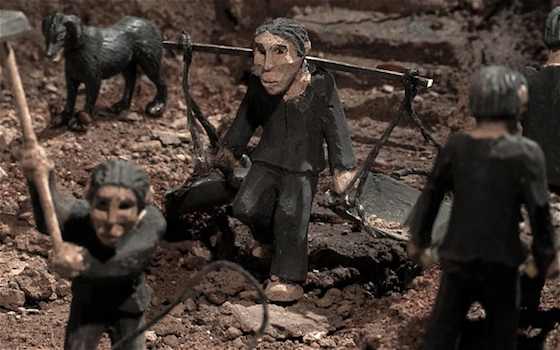- MENU
- HOME
- SEARCH
- WORLD
- MAIN
- AFRICA
- ASIA
- BALKANS
- EUROPE
- LATIN AMERICA
- MIDDLE EAST
- United Kingdom
- United States
- Argentina
- Australia
- Austria
- Benelux
- Brazil
- Canada
- China
- France
- Germany
- Greece
- Hungary
- India
- Indonesia
- Ireland
- Israel
- Italy
- Japan
- Korea
- Mexico
- New Zealand
- Pakistan
- Philippines
- Poland
- Russia
- South Africa
- Spain
- Taiwan
- Turkey
- USA
- BUSINESS
- WEALTH
- STOCKS
- TECH
- HEALTH
- LIFESTYLE
- ENTERTAINMENT
- SPORTS
- RSS
- iHaveNet.com: Movie Reviews

"The Missing Picture" Movie Review: 4 Stars
by Michael Phillips
"The Missing Picture" is adapted from the autobiographical sections of Rithy Panh's book "The Elimination", exploring the story of his familiy before and after the Khmer Rouge entered Phnom Penh Pol Pot's communist regime overtoook the Cambodian capital on April 17, 1975.
Panh was eleven years old. Citizens were rounded up and sent to agricultural labor camps. With the ostensible purpose of eliminating class divisions, all personal effects were confiscated. Numbers replaced individuals. Torture and execution were undertaken for even the slightest infraction. Hunger soon dominated. The regime was built on massive deprivation and fear. In a bold and imaginative leap, this story is pictured via carved figurines, overlaid by narration.
As brilliantly as Art Spiegelman examined his parents' experiences of the Holocaust in the graphic novel "Maus," the Cambodian-born filmmaker and author Rithy Panh relives his own survival of the Khmer Rouge regime in "The Missing Picture."
"The Missing Picture" is a fantastic film, and while I loved the movie that won this year's best documentary Oscar, "Twenty Feet From Stardom," that one's a blip on the world radar compared with Panh's searching, contemplative and spellbinding effort.
It sounds facile, even ridiculous, but Panh works primarily in clay figurines.
Panh, in voice-over of often striking poetry, recalls his childhood in Phnom Penh, a large and bustling family, "the smell of caramel, fish, spices and mango." Then came 1975 and the invasion. Panh was 13. His life turned in on itself, devolving into a nightmarish series of re-education camp relocations, collectivist propaganda, buried bodies and always, always, hunger. Often he and his fellow "revolutionaries" subsisted on a handful of rice, rats and roots.
The suffering isn't unimaginable; after all, "The Missing Picture" imagines it for us, eloquently.
Panh blends diorama-like scenes of his life before and after Pol Pot with beautifully interpolated (and often superimposed) archival and documentary footage.
Some of the historical finds were photographed by the Khmer Rouge for ideological indoctrination purposes; other scenes were simply recording the zero-sum "progress" of the workers, digging themselves into so many early graves under threat of a quicker death.
It unfolds as a single, inspired idea.
The dioramas and meticulously painted figurines lend a distancing effect, but never frivolously so. Panh's voice-over narration was written by Christophe Bataille. The music, as evocative as the images, comes from composer Marc Marder. Panh's lateral camera moves allow the viewer full immersion in the scenes he describes. This is a first-person account of astonishing suffering, yet the experience of watching "The Missing Picture" is not punishing.
"I'd like to be rid of it," says Panh early on, regarding his memory of so much of his earlier life.
Now in his 50s, the filmmaker has created a nonfiction work of utterly personal quality, part essay, part psychoanalytical confession of survivor guilt -- and part physical artifact.
See it.
It's proof that an artist can always find a new way for a wide audience to see, and feel, what he saw, and felt.
No MPAA rating. Running time: 1:32.
'The Missing Picture' Movie Review